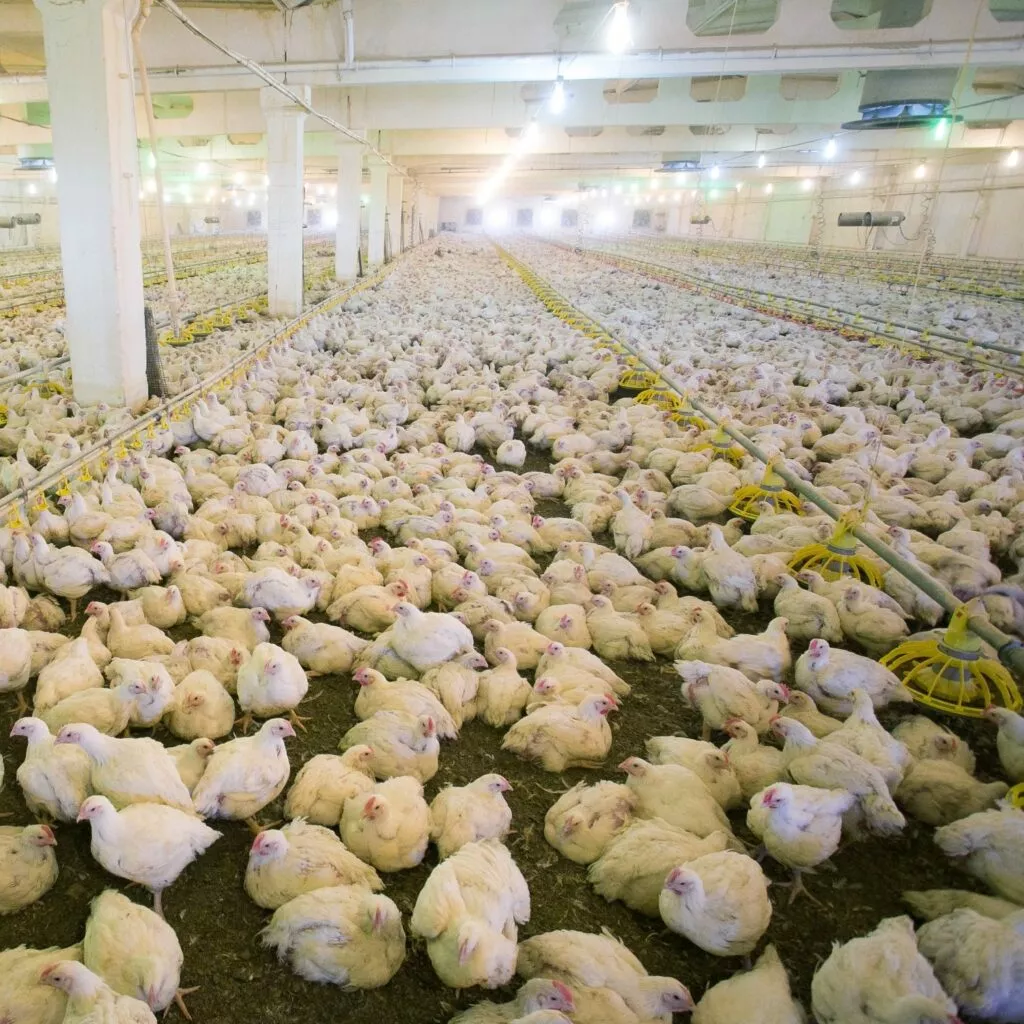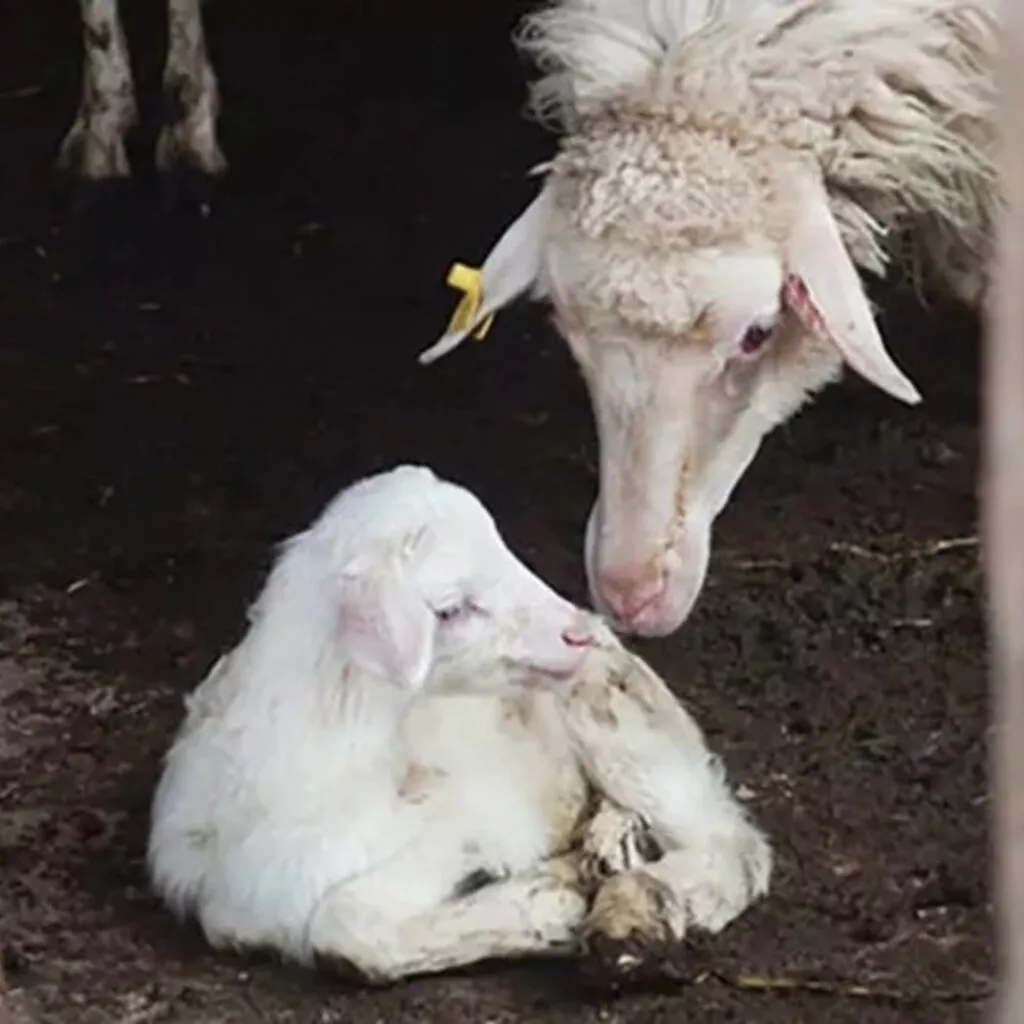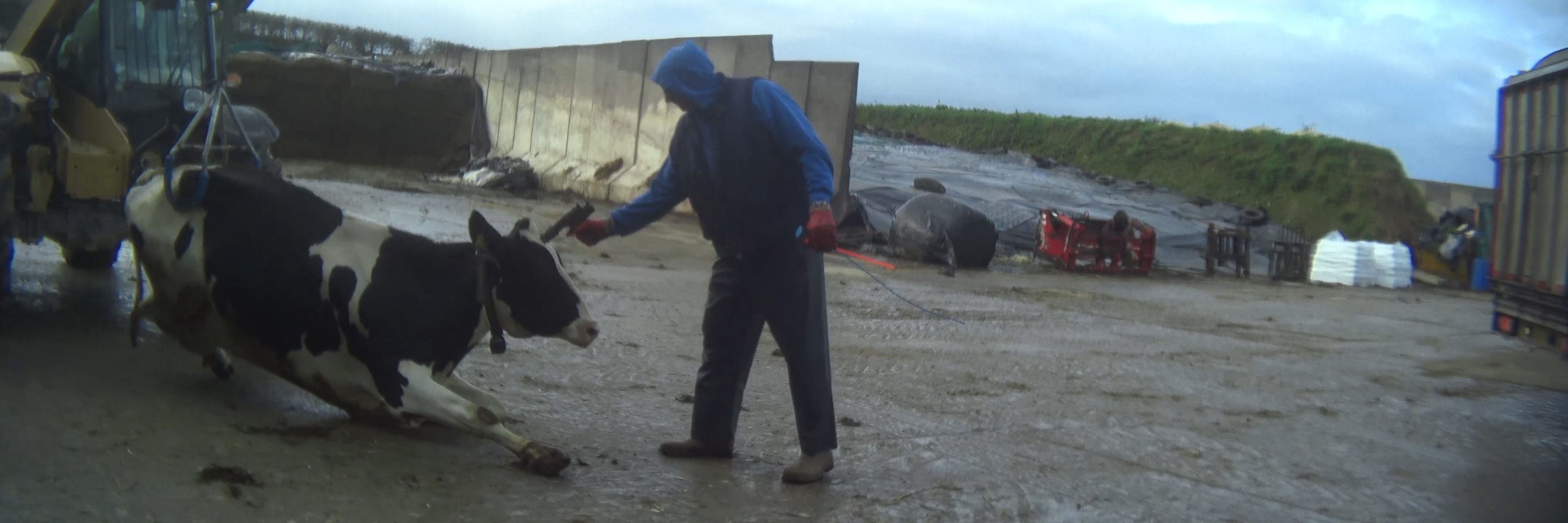

Why is The Dairy Industry Cruel? 7 Shocking Legal Practices You Would Never Believe Existed

What’s Wrong With The Dairy Industry?
Around 2.6 million cows are used for their milk every year in the UK and a growing number of them have never stepped foot on grass and will never see a pasture.
Because of the deceptive marketing used by the industry, few people really know what happens to cows in the dairy industry. Many people, for example, don’t realise that, just like us, cows only produce milk after giving birth.
Below are some of the abuses cows are subjected to throughout their lives. Practices that are part and parcel of typical dairy production and, most disturbingly, are perfectly legal right here in the UK.
Dairy Fact 1: Thousands of Cows are Slaughtered While Pregnant Every Year In The UK
Male calves are not the only babies to be killed by the dairy industry (more about this later), as some calves are killed while they are still in their mother’s womb.
The slaughter of pregnant cows is something so shocking that most people struggle to believe that it is allowed by UK law. Thousands of cows are killed every year in the UK while they are carrying their babies. Shockingly, many of them are in the last stage of their pregnancies, meaning their calves can suffer during and for a few minutes after the slaughter.
The vast majority of the pregnant cows that are slaughtered every year are cows bred for their milk.
Dairy Fact 2: Male Calves Born In The Dairy Industry Are Sent to Slaughter
Male calves cannot produce milk and therefore are considered useless to the industry.
According to a 2020 report, every year in the UK an estimated 60,000 male calves – approximately 15% of all male calves born in the dairy industry – were shot on-farm.
This tragic fate has been defined by many as the ‘dairy’s dirty secret’ and long criticised by animal protection organisations, as well as the general public.
The dairy industry even admits that this practise is extremely problematic, calling it an ‘own goal’:
Shooting bull calves is potentially a massive own goal when we are talking about showing how great our industry is
National Farmers (NFU) Union dairy chairman Michael Oakes (Jan, 2020)

Due to increasing pressure from the public and animal welfare organisations, retailers have started to implement new rules to limit the killing of male calves, which were planned to come into force by the end of 2021.
However, while the shooting on-farm may have been banned by the majority of retailers and dairy producers, the fate of these innocent animals has not changed as they are still being killed.
According to a report by the Rural Payment Agency, as many as 65,000 male calves less than a month old were killed in UK abattoirs in 2021. This shocking figure sheds light on a new dirty secret of the industry, which has once again deceived people by simply changing where these animals are killed, instead of stopping killing them.
You can change this. Sign our petition demanding that the UK Government stops funding the dairy industry.
Dairy Fact 3: Cows In The Dairy Industry Are Killed For Cheap Meat
Cows in the dairy industry are bred specifically to produce far larger quantities of milk than they would ever produce naturally. This unnatural milk production, combined with repeated forced pregnancies, takes a toll on their bodies. By the time they are a few years old, they are seen as ‘unproductive’ – because they’re so exhausted and their milk production has declined – and no longer profitable to the industry.
At this point they are sent to slaughter and sold for cheap meat and leather products.

The majority of cows in the UK are stunned with a captive-bolt pistol. Once stunned they are hung upside down by one leg, lifted onto an overhead conveyor and moved to the ‘bleed area’. Here their throats are cut and they are left to bleed out. Stunning can be ineffective and some cows have their throats cut while still conscious.
Dairy Fact 4: Cows In The Dairy Industry Could Never See A Pasture
In the UK, cows may graze for around six months of the year depending on the weather conditions.
For the remainder of the year, most cows are confined in small sheds with no access to the outdoors. Here, these social and intelligent animals are not able to fulfil their needs and express their natural behaviours, causing them great distress.
And some don’t even get six months outside. Because the industry is constantly looking for ways to increase profits, a new system – referred to as ‘zero-graze’ – has been introduced in the UK and it is being used more and more frequently.
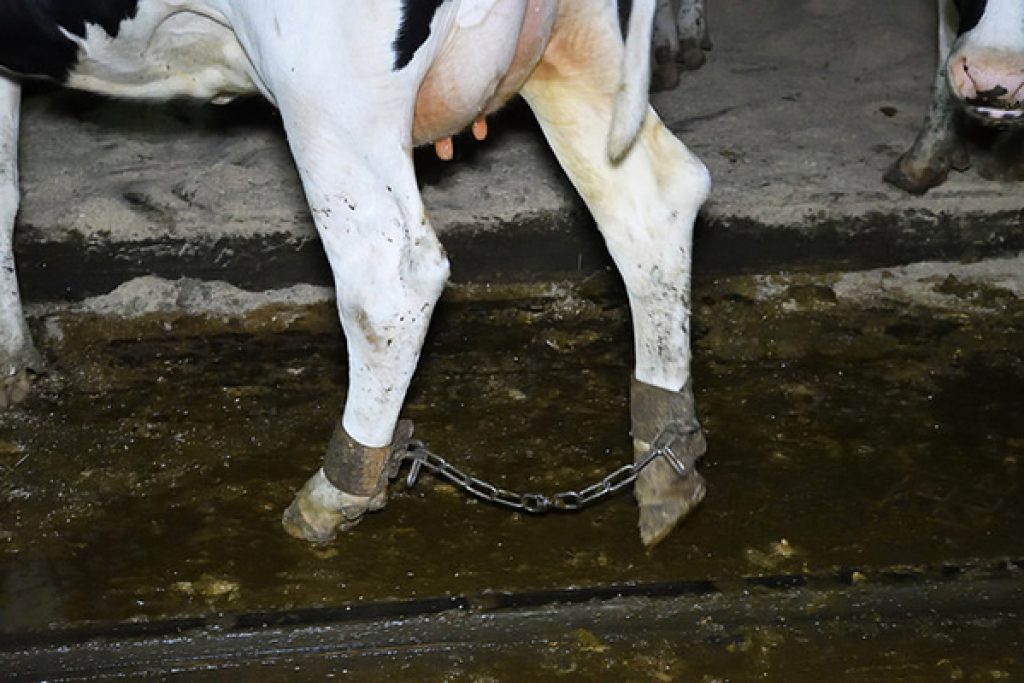
In a zero-graze system, a cow is not allowed to graze or be outdoors on the grass. Instead, she is fed silage (wet, fermented grass) and a high concentrate mix of cereal, soya, sunflower meal and maize.
Currently, an estimated 16% of UK dairy farms have adopted the zero-graze system and the number, sadly, is expected to grow.
Some cows are kept in tie-stalls, where – because of the extremely limited space provided – they are tethered by a chain, metal bars or ropes tied around their neck. A cow can be chained for up to 24 hours per day without being able to move or even turn around.
Help us protect cows, by signing our petition asking the UK Government to shift subsidies from dairy products to plant-based alternatives.
Dairy Fact 5: Cows Only Produce Milk For Their Babies
Just like humans, cows only produce milk for their babies. For this reason, once a cow is around 15 months of age, she is artificially impregnated – for the first time.
The process of artificial insemination is distressing, as she is forced into a confined space where a farmer inserts an inseminating gun in her vagina to deposit sperm. While doing this, the farmer inserts one arm in the cow’s anus to manually manipulate her reproductive organs.
Once a cow becomes pregnant, she carries her baby in her womb for nine months before giving birth. Just like us.
Once she gives birth, she starts producing milk for her newborn calf – milk that her baby would naturally drink during the first 10 months of his or her life.
However, in dairy farms – whether small-scale, certified organic or intensive – the milk she produces will not be given to her baby, as it will instead be bottled up for human consumption. And so, her calf is separated from her and swapped for a milking machine which is attached to her teats.
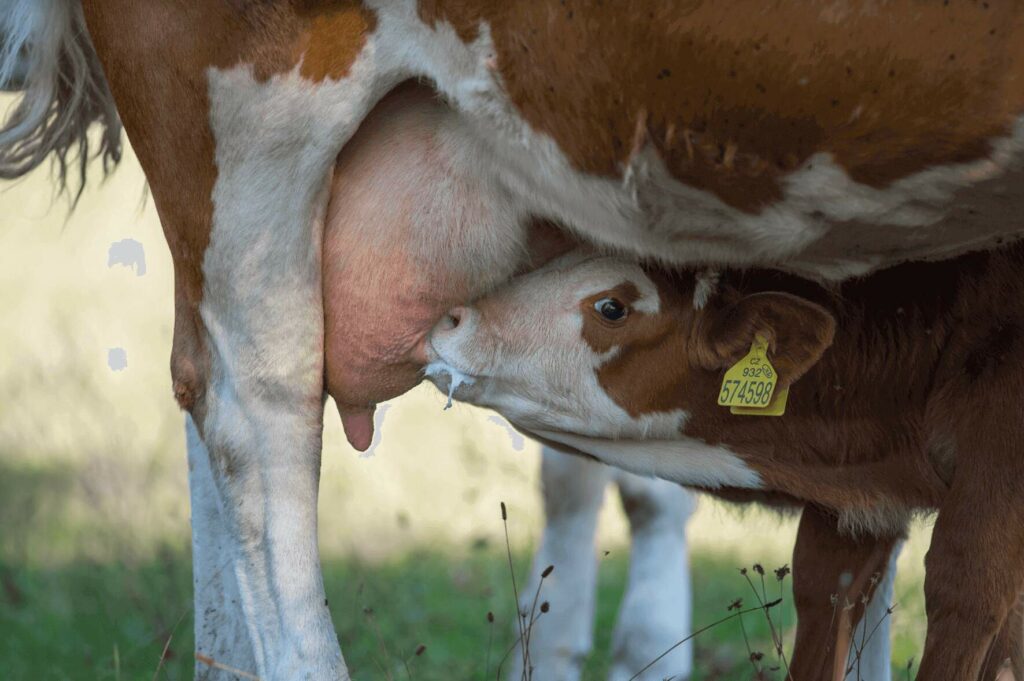
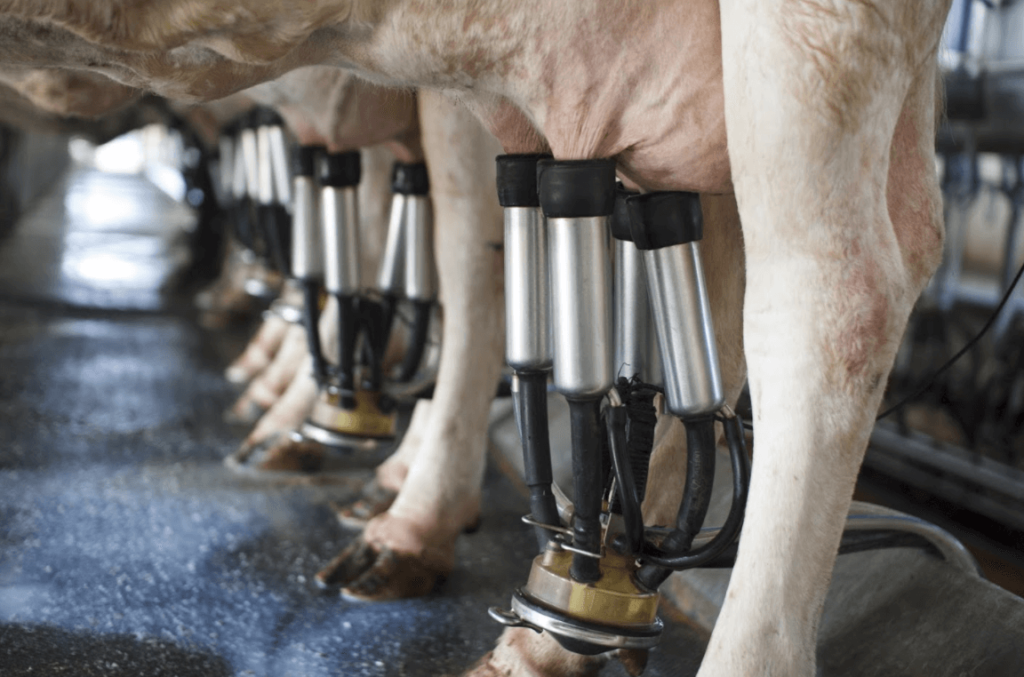
This process lasts for three months until she is impregnated again in order to maintain unnaturally high yields of milk production.
In 1975, a cow used for her milk produced around 4,100 litres of milk per year. Today a cow will produce double that amount: 8,200 litres of milk per year, which is an average of 22 litres per day.
In 2020, the UK produced 15.3 billion litres of milk, the highest annual figure since 1990.
This cruel, abusive cycle is repeated on average three or four times until the cow – exhausted by the repeated pregnancies, births and unnatural milk production – is killed because she became sick, or sent for slaughter and sold for cheap meat or leather products.
You can make a change for cows and calves today, by ditching dairy and by signing our petition asking the UK Government to divest from dairy products and start funding plant-based alternatives!
Dairy Fact 6: Calves Are Taken Away From Their Mothers Hours After They Are Born
Typically only a few hours after giving birth, a cow’s baby is taken from her so that the milk intended for her calf can be bottled and sold.
The separation of cows and calves is extremely distressing for both mother and baby. During multiple investigations carried out by Animal Equality, mother cows and their newborn calves have been filmed calling out to each other desperately for hours or searching for each other in vain. These scenes can only be described as heartbreaking.
After being torn away from their mothers, female calves usually spend the first eight weeks of their lives confined alone in barren hutches where they are force-fed a milk replacement. They are then transferred to group housing with other young females waiting to take their mother’s place and be condemned to a life of misery.
Dairy Fact 7: Mastitis and Lameness Are Common Health Issues that Cows Develop
Cows in the dairy industry are abused throughout their entire lives. From the moment they are born they are torn away from their mothers and confined alone until they are old enough to be artificially impregnated over and over in order to keep producing milk.
This draining cycle of pregnancies, births and milk production is extremely hard on them, which is why often they develop severe diseases or physical ailments. Many die from these diseases or are killed as a result.
Some of the most common health problems that cows develop are metabolic starvation, mastitis and lameness.
Carrying an unborn calf during pregnancy, and producing unnatural quantities of milk is very demanding on a cow’s body. Metabolic starvation happens when a cow cannot consume enough food to keep up with what it is demanded of her physically, and so she must draw on her body’s reserves. The result is that her bones and spine stick out from her skin, a clear sign of malnourishment.
Another common disease resulting from continued milking over a period of several years is mastitis, an infection of the udder which causes secretion of pus. Up to 50% of cows used for their dairy suffer from mastitis.
Because of the unnatural and barren conditions cows are kept in, they often become lame over time. Forcing them to stand for long periods of time on hard floors, improper or neglected trimming of their hooves, malnourishment, infections and overall poor quality of the facilities are the main reasons many cows lack strength and become debilitated.
Lameness affects up to 30% of cows used for their dairy in the UK and it is proven to cause extreme discomfort and pain.
The Dairy Industry: Our Latest Investigation On a UK Dairy Farm
In February 2021, we released a shocking investigation inside a Welsh dairy farm exposing extreme violence and abuse taking place. We filmed cows being kicked in the stomach and punched in the face. On one occasion, one cow was left to die agonising after her baby had died inside of her.
The investigation was broadcasted on BBC One’s Panorama in a 30-minute-long episode called ‘A Cow’s Life: The True Cost of Milk’, reaching millions of people. Among these people, was actress Miriam Margolyes, who was shocked to know about the separation of mother and calves.
The gravity of what she witnessed prompted her to take action. And so she joined Animal Equality in urging the UK Government to shift subsidies from the dairy industry to fund plant-based alternatives and offer financial support for farmers transitioning to arable farming or land rewilding programmes.
Take Action For Cows and Calves
With 1 in 3 Brits now reported to be consuming plant-based milk on a regular basis, the nation is stepping away from supporting this industry. Our supermarket shelves are overflowing with plant-based milk, cheese and yoghurt alternatives.
A brighter future is within our grasp. Make a change for cows and calves today, by ditching dairy and by signing our petition!
Demand the Government helps farmers transition to plant-based alternatives to dairy – SIGN NOW!

Protect cows and calves
Every day mother cows are separated from their newborn calves, just so milk can appear on the shelves of supermarkets. Protect cows by choosing plant-based dairy alternatives.
Most Popular
